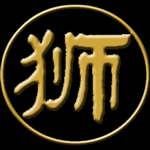The lion dance is one of China's most distinctive cultural arts. The tradition dates back thousands of years. It is believed to have appeared in either the Tang, Han, or Ch'in dynasties, possibly in different forms. Other legends associated with lion dance include using the dance to chasing away the monster "Nian." Often performed by kung fu schools, it brings with it good fortune, prosperity, and longevity. The lion dance appears in western countries mainly during celebrations such as Chinese New Year, the August Moon Festival and other multi-cultural events. It is also often seen at the opening of new shops, weddings, births, or where good fortune and prosperity is wished.
While lions are not native to China and were rarely seen in Ancient China, the lion somehow became a part of the Chinese culture. They are often seen carved outside of temples and of course there is the lion dance. Often, the lions statues and costumes for lion dancing have no resemblence to an actual lion, probably due to the fact that actual lions were rarely seen and the bright colors were used to chase way evil spirits and bad luck. There are two major types of lion dancing evolved from Northern and Southern China with the lion of the Northern style resembles an actual lion more. However, both styles produce a very realistic portrayal of the lion. The dance can be performed freestyle or choreographed. The freestlye is used mostly in parades. The choreographed dances are used in shows coordinated to a drum, gong, and cymbals.

